It’s old news that customers have changed how they shop and buy. Thanks to the Internet, customers have a massive amount of information, reviews and feedback on virtually anything they want to buy, and they seek it out prior to making a buying a decision. Consumers are more in control of their purchasing behaviour than ever before. This changing dynamic has developed a new approach towards the marketing and sales process.
Companies like SharpSpring realized this discrepancy and created software tools to help create, manage and analyse inbound marketing tactics. A new perspective has evolved out of necessity to better address consumers needs. Sales and marketing are starting to work in harmony to provide a seamless experience along the prospect – consumer – brand ambassador journey.
This never-ending process is aptly depicted by Altimeter’s Dynamic Customer Journey (shown below). It’s not so much a marketing funnel or sales cycle, but an ongoing experience controlled by the customer as to how and when they choose to seek information and buy.
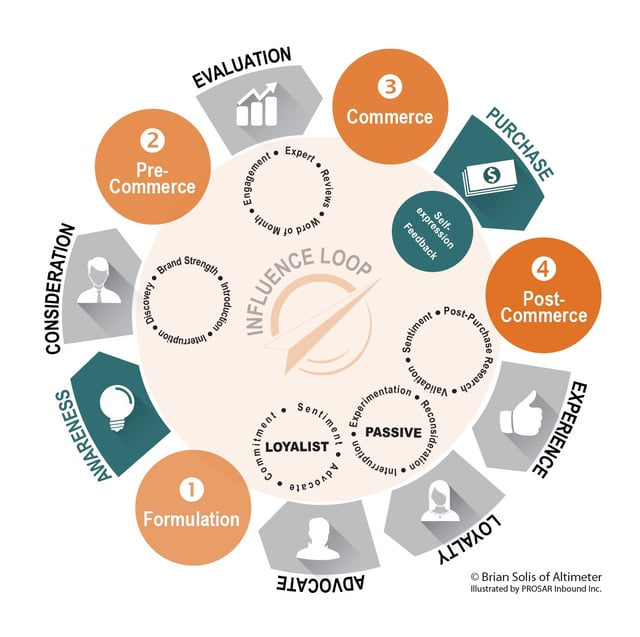
So what does this shift mean for your organization? How do you attract, convert, close and delight new customers? Radical inbound marketers will tell you that the old ways of marketing (e.g. broadcast media, such as newspapers, television, direct mail, cold calling) are falling on deaf ears and a waste of time. Obviously, that isn’t totally true. But, it is true that consumers are less likely to listen to uninvited messages that tell them why they need something. Consumers are now motivated to seek out the information they want, whenever they feel they need it. The intent and tone of what they seek will be to inform and enlighten, not to sell them.
Your target market may be more interested in a blog, review or rating, than a corporate brochure online. In fact, prospects often seek out information provided by anyone other than the manufacturer/seller of the product/service. They are seeking seemingly unbiased opinion (yes, I realize that is an oxymoron) to help clarify their buying decision.
For this reason, content generation has become one of the primary marketing efforts to inform, educate and subtly persuade. (Yes, marketing is still about persuading.) A mind-numbing plenitude of content is poured into the ether every day in the form of web pages, blogs, reviews, whitepapers, posts, comments, ratings, videos, presentations, animated graphics, photos, emails, texts, podcasts… Realizing that you need a content strategy to help position your information with your target market is the easy part — how do you effectively get your message to the right people at the right time?
There is no quick fix or easy means of successfully reaching out to your desired audience. Being noticed among the clamour of content relies on several skills (strategic marketing, product/service/industry knowledge, editorial strength, creative prowess, online media familiarity, SEO expertise), time (it is largely an organic process) and money (unless you are capable of doing it all yourself). Hence the growth in content marketers, strategists and experts. Taking advantage of such a professional or competent agency is probably a smart marketing investment. Certainly, including content as a central component of your marketing plan will help you to successfully reach your target audience and maintain a relationship with them.













 And let’s not forget the offline avenues! Lasting connections can be initiated and nurtured online but often offline conversations will reinforce those relationships and help you generate leads or references. Here are a few avenues to consider:
And let’s not forget the offline avenues! Lasting connections can be initiated and nurtured online but often offline conversations will reinforce those relationships and help you generate leads or references. Here are a few avenues to consider:
